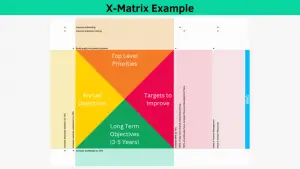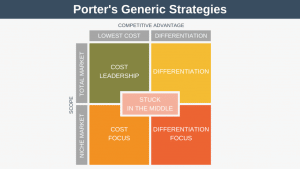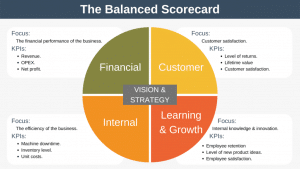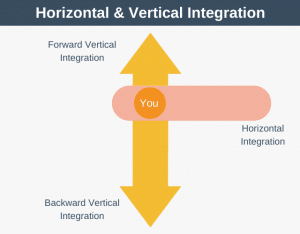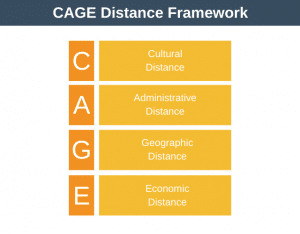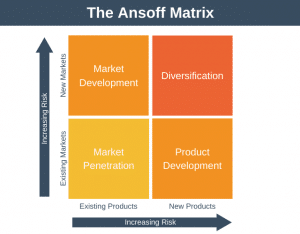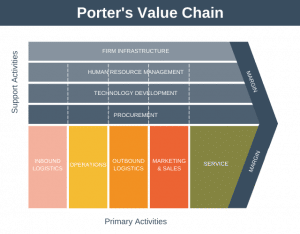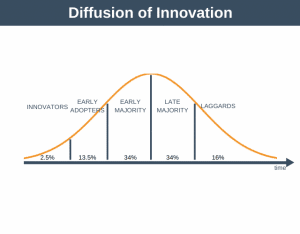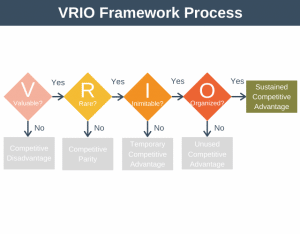McKinsey 7S Framework is a strategic planning tool designed to help an organization understand if is it set-up in a way that allows it to achieve its objectives.
Before the advent of the 7S Model, when managers thought about organizational design, they tended to focus on structure and strategy. They thought about who is responsible for what, who reports to whom, how many layers of management there should be, and how to beat the competition.
However, as organizations got larger and more complex, coordination became just as important, if not more important, than structure.
Background
The model was developed by McKinsey & Company in the 1980s. Specifically, it was developed by Robert H. Waterman, Jr. and Tom Peters.
Peters and Waterman also wrote the book In Search of Excellence: Lessons from America’s Best-Run Companies, and developed the Management By Walking Around (MBWA) model.
Why Use the 7S Framework?
The model is most widely used to assist with:
- Organizational change.
- Mergers and acquisitions.
- Implementation of a new strategy.
- Understanding the weaknesses (blind spots) of an organization.
The McKinsey 7S Framework
The McKinsey 7S Framework represented by the following diagram.
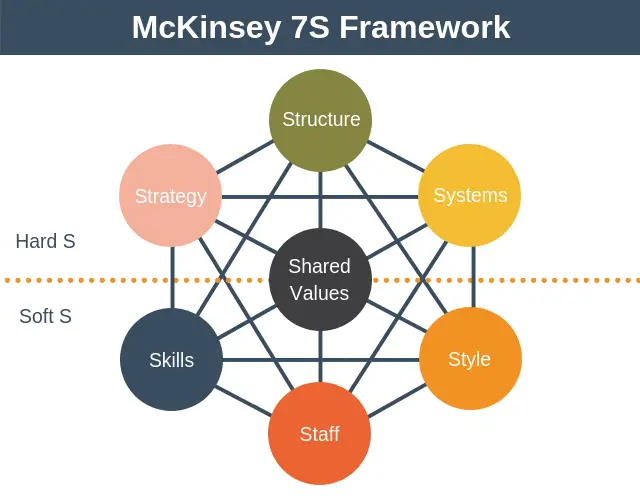
There are many things to note from this diagram:
- All the areas are interconnected. This means that a change to one area will have implications for all other areas.
- There is no hierarchy and all areas are the same size. This indicates that all areas are considered to be equally important.
- The areas are divided into hard and soft areas. Hard areas are easy for management to influence and change. Soft areas are more woolly and influenced by the culture of the organization.
- Positioning Shared Values in the center of the 7Ss indicates that the organization’s values are central to all elements.
Let’s examine each area of the McKinsey 7S Framework in turn.
1. Strategy
The organization’s plan to win in the marketplace. How will it gain a comparative advantage over the competition? Learn more about Strategy.
2. Structure
How the organization structures its resources (people, machinery, money etc) into teams and groups.
3. Systems
The processes and daily activities that are undertaken by the people who work in the organization, and the tools they use to help them with those processes.
4. Style
This is the way the organization does things. You can think of this area as being the culture of the organization. The informal rules of the organization.
5. Staff
The employees of the organization and how they are grown and developed.
6. Skills
The skills of employees and the skills of the organization. What is the core competency of the organization and what should be outsourced?
7. Shared Values
The core values of the organization that permeates all areas and aspects of the organization. In the original version of the 7S Framework, this was called Superordinate Goals. These values need to reinforce what the organization is trying to achieve.
Using the Model
The most common way to use the McKinsey 7S Framework is to analyze where you are now, and see how that differs from where you want to be. Where you want to be could mean simply executing your current strategy, or it could help you analyze the challenges of a proposed merger.
Here is a 5 step process you can use to make use of the McKinsey 7S Framework. Before we jump into the 5 steps be aware that:
- Using the model is going to take time and effort. You’ll need to perform research as well as benchmark your current and future competitors.
- The model spans the entire organization so you’re going to need the top people on board and bought-in to make it happen.
1. Understand the current situation
In this step, you assess where the organization is right now. What are the strengths and weaknesses of the organization? What’s holding the organization back. Are there any other gaps? Is the area in alignment with all other areas?
The following checklist can help you determine where you are now. Note that these questions are based on the Strategy Diamond framework.
| Strategy: | In what arena will we compete? What vehicle will we use to get to market? How do we differentiate ourselves? What major steps do we need to take? What value will we extract from the strategy? |
| Structure: | What is the structure of the organization? Are decisions centralized? What are the formal and informal channels in the organization? How are the structure and the employees aligned with the strategy? |
| Systems: | What are the most important processes of the organization? What are the most important systems of the organization? Where are the checks and controls in these systems? Are they fit for purpose? |
| Style: | What is the leadership style? Does the organization reward how things get done as well as what gets done? Do teams collaborate or compete? How do management and employees interact? |
| Staff: | Where are our strengths? Where are the gaps? Are we missing staff or entire capabilities? Should we outsource? |
| Skills: | What are the core competencies of the organization? Are there any skills gaps? Is the right training and development in place? Do we have the right employee onboarding process? What is the company known for doing really well? |
| Shared Values: | What are the values of the organization? How do the values manifest themselves in everyday life? How would you describe the culture of the organization? |
2. Determine the desired situation
The second step is to determine where you want to be and what the corresponding organizational design looks like when you get there.
If you understand where you want each of the 7 areas to be then it’s going to be much easier to create your plan to get there.
3. Determine your action plan to reach the desired situation
In this step, you detail your plans for changing each of the seven areas.
4. Execute the action plan.
Here you implement your action plan. As the changes are critical to the organizations future success it’s important to make sure you have the right people both executing and sponsoring the plan.
5. Perform a periodic review of the situation.
The seven areas are not static. They are dynamic and constantly changing. Because a change in one area always impacts all of the other areas it is important to regularly review the situation and take remedial action to recalibrate your plans if necessary.
McKinsey 7S Model Example
For this example we’re going to keep it simple an use the McKinsey 7s model to examine a startup that has just begun to see its sales grow rapidly.
Step 1: Current Situation
The company has just 5 employees. This was fine while the product was being initially developed but now that the company has begun to experience sales growth it’s woefully inadequate.
The company’s strategy is to grow domestically and also tentatively expand into another country. At the moment systems and processes are virtually nonexistent as everyone is sitting within talking distance of the CEO who is coordinating everyone directly.
| Strategy: | Market penetration with tentative expansion. | YES |
| Structure: | No real structure. | YES |
| Systems: | No real systems. | YES |
| Skills: | No missing skills. | YES |
| Staff: | Staff are highly motivated and well incentivized, but there isn’t enough of them to cope with even current demand. | NO |
| Style: | CEO directs everything. They use a transformational leadership style. | YES |
| Shared values: | The team is close-knit and trust each other. | YES |
Step 2: Measuring against the future situation
Now we look at what this means against where we want to go. The plan is to scale up the organization to 300 people as sales grow and more and more of the domestic market is captured.
| Strategy: | No change in strategy required. | YES |
| Structure: | More structure will be needed as the organization gets larger and requires multiple sites. | NO |
| Systems: | Systems don’t yet exist to cope with a larger organization. There will need to be HR systems, project management methodologies etc. | NO |
| Skills: | Right now there is a gap in that we don’t know what we require in terms of certain skills. For example, HR skills, finance skills, and customer support skills. | NO |
| Staff: | With so many staff being recruited in such a short space of time we don’t have good reward structures for all levels. We also have no onboarding process. | NO |
| Style: | The current style is good but how do we bring maturity? Do we need help? | NO |
| Shared values: | These are good but they need to be made more formal and instilled into everyone. | NO |
As you can see, for this company to get to where it wants to go there is a lot of work to be done.
Steps 3, 4, & 5
The final three steps are all about creating and executing the plan to create alignment between all the 7Ss of the McKinsey 7S Model to enable the organization to achieve its growth goals.
The first thing this company decides is that the transformation shouldn’t be lead by the CEO. It will hire a senior project manager to lead the transformation.
The second decision this company makes is to admit that it doesn’t have any talent in the areas of HR and finance, so it’s going to bring in specialist consultants to help it establish these areas.
And so this organization continues to build its plan. Once the plan is complete, it then needs to execute the plan, monitoring it and adjusting it as new information comes to light.
McKinsey 7S Framework PDF
This article is available as a PDF. If you’d like to download it please click here.
McKinsey 7S Strengths and Weaknesses
The strengths of the McKinsey 7S Framework include:
- It shows the wider impacts of any change.
- It helps an organization work out what it needs to do to get where it wants to be.
- It helps to align departments, processes, and softer issues.
The weaknesses of the McKinsey 7S Framework include:
- It can be complicated to use and requires lots of research and benchmarking.
- It needs the support of very senior management.
- It is an internally focussed tool. It doesn’t look at all at the external environment.
Summary
The McKinsey 7S Framework can help an organization understand how to get from where it is now to where it wants to be.
It is particularly good at helping organizations take into consideration how a change to one area can have a wider impact on the organization.
